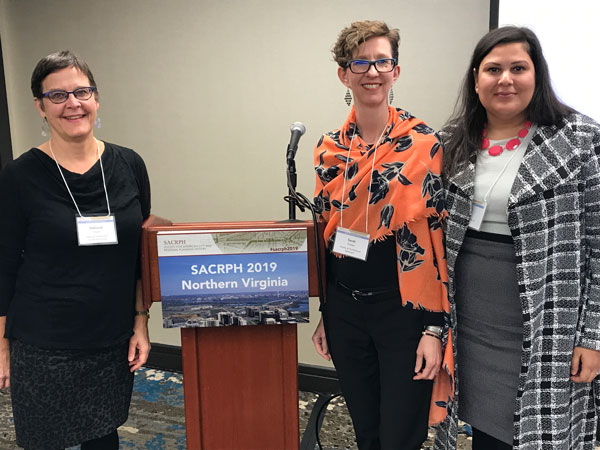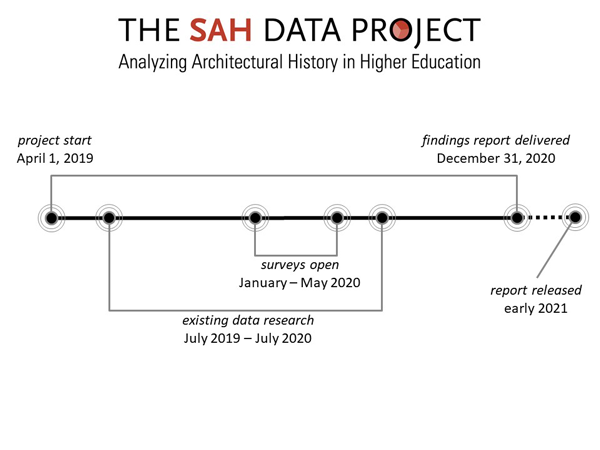-
Membership
Membership
Anyone with an interest in the history of the built environment is welcome to join the Society of Architectural Historians -
Conferences
Conferences
SAH Annual International Conferences bring members together for scholarly exchange and networking -
Publications
Publications
Through print and digital publications, SAH documents the history of the built environment and disseminates scholarshipLatest Issue:

-
Programs
Programs
SAH promotes meaningful engagement with the history of the built environment through its programsMember Programs
-
Jobs & Opportunities
Jobs & Opportunities
SAH provides resources, fellowships, and grants to help further your career and professional life -
Support
Support
We invite you to support the educational mission of SAH by making a gift, becoming a member, or volunteering -
About
About
SAH promotes the study, interpretation, and conservation of the built environment worldwide for the benefit of all
What does success look like? and other questions from SACRPH 2019
Welcome to The SAH Data Project’s process blog, a series of short-form reflections and interviews about the Society’s study of architectural history in higher education. By Sarah M. Dreller, Postdoctoral Researcher in the Humanities. #SAHDataProject
The SAH Data Project just passed a milestone of sorts: earlier this month, I answered audience questions during the Society for American City and Regional Planning History’s conference in Arlington. Without context, this may not seem like an important step forward. Participating in disciplinary conferences is a standard facet of academic culture, after all. Actually, though, this was the first time I’ve met a cohort of our project constituents on their own turf. Every other opportunity I’ve had to discuss this work with people outside the core project team (and there have been quite a few such opportunities, I’m pleased to say) has been as phone calls or in various virtual spaces or in person at SAH’s conference and Chicago headquarters. But listening to people face to face in the places that are comfortable to them can make the interaction more valuable in myriad ways that extend beyond our immediate data-gathering goals. This kind of proactive engagement has been part of the project vision from the outset for a very good reason, in other words. And it was time to start.

During our SACRPH 2019 session, “Shaping the Field of Planning History,” my fellow panelists and I discussed various opportunities our projects offer to planning historians. My comments highlighted ways for planning historians to make their voices heard within the SAH Data Project. Dr. Deborah Hurtt (left), a Senior Program Officer with the Division of Education Programs at the National Endowment for the Humanities, emphasized two NEH grant programs that could enable more planning history-focused events and workshops. And Dr. Eliana AbuHamdi Murchie (right), the Global Architectural History Teaching Collaborative’s Project Manager, described how planning historians with global expertise can contribute to the GAHTC’s library of survey teaching modules. Image credit: Dr. LaDale C. Winling (session chair)
My current schedule of disciplinary conference travel has been available online since we launched the SAH Data Project’s website last summer. I invite you to have a look at that and reach out to me with questions you’d like me to address during any of those trips. I also invite you to check back regularly because we’re constantly updating that schedule as we determine more about what architectural historians need and want from this project.
After more of the details have been hammered out in a few months’ time, I hope to use the process blog to reflect more broadly on our planning approach. So keep an eye on this space, too.
In the meantime, I thought it might be helpful to share some key ideas I just discussed in Arlington in case questions like these are on your mind. And, as always, please leave a comment or write me an email in response because I’m eager to know if this helps or there is anything I’ve missed.
What role does planning history play in a project about architectural history?
The definition of “architectural history” for the purposes of the SAH Data Project is quite broad. In addition to the history of buildings, the project also encompasses the history of landscapes, cities and planning, engineered structures, and interiors. Those five subfields of architectural history are what we’re calling our “expertise scopes.” Gathering data about who, where, and how people are studying and teaching these different scopes is a big part of what we’re doing.
Does the SAH Data Project want to hear from independent scholars?
The project is focused on architectural history in higher education but otherwise participants are definitely not limited in any way by tenure-stream status. That means that any independent scholars who study, teach, and/or make curricular decisions about architectural history coursework are strongly encouraged to give their input. We want to hear from as many people like this as possible, in fact.
Is the study gathering data about what motivates people to enter the field or is it only about what people are doing once they’re already students and/or faculty?
We definitely want to know what has motivated people to enter the field. Actually, right now we are in the middle of determining what data we need to describe the “pipeline” process for architectural history, i.e. the various kinds of factors that contribute to people pursuing architectural history studies. We’re thinking of this in qualitative terms as part of our commitment to the project’s data humanism approach.
What are the most important ways planning historians can contribute to the SAH Data Project?
Three things come to mind. First, completing the survey when it is posted online or lands in your inbox is absolutely crucial for everyone – not just planning historians. That’s not the only way we are gathering data but it is certainly how we’ll be getting much of the qualitative information that will ultimately help us tell meaningful human-centric stories. You can sign up for the newsletter to receive email updates on when the survey will launch.
Second, we will also be relying on everyone, including planning historians, to actively encourage their program chairs and anyone else who makes curricular decisions about architectural history coursework to complete their version of the survey. That’s because those people aren’t necessarily architectural historians and therefore won’t necessarily appreciate the importance of what we’re asking them to do, yet they’re the people who have access to enrollments, demographics, and other quantitative data that the project really needs.
And, third, since planning historians haven’t made their perspectives known to us yet as much as, say, historians of buildings or landscapes, it would be helpful for planning historians to really start reaching out to us about what is important to them. Emailing me directly, commenting on a process blog post, and engaging on social media would go a long way toward expanding planning historians’ overall presence in the project.

When can planning historians start completing the survey?
Everyone will be able to complete the survey at the same time regardless of their architectural history expertise scope. The current survey launch is scheduled for January 2020 and right now we expect it to remain open until after SAH’s annual conference in May.
I should add that although each respondent will complete only one survey, we are actually developing three different versions of it. That’s because we are asking a slightly different mix of quantitative and qualitative questions to students, faculty, and people who make curricular decisions. I am planning to write a process blog delving into the key differences between the three surveys at some point during the open survey window so I recommend subscribing to the e-newsletter if you don’t want to miss that.
What does success look like for the SAH Data Project?
The SAH Data Project will be successful if the findings report represents the state of architectural history in higher education accurately, even if aspects of that description are unpleasant. Thinking more expansively, though, there is the hope that the SAH Data Project’s findings might eventually inspire or inform some kind of meaningful positive change in the field like new grant opportunities, revised course offerings, and so on.


Leave a commentOrder by
Newest on top Oldest on top